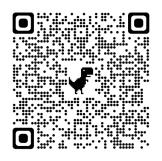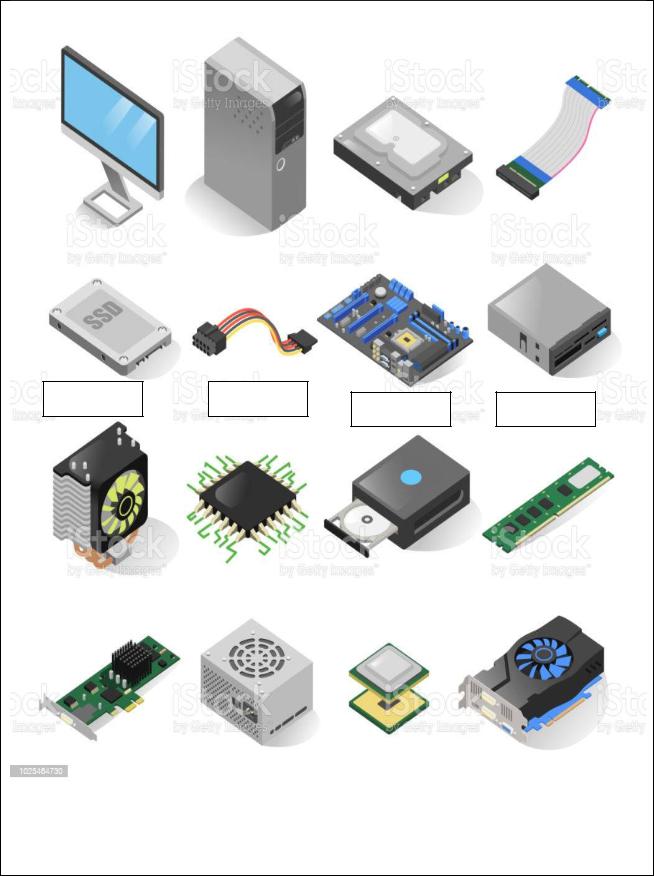
Методическое пособие 661
.pdf
EVERYDAY ENGLISH
Let`s meet!
I. Read the expressions below. Practice saying and memorizing them:
Hello! I am Jim Brown. – Здравствуйте! Меня зовут
Джим Браун.
How do you spell your name? – Как пишется ваше имя?
Pretty good, thanks. – Все в порядке, спасибо.
Where are you from? – Откуда вы (Откуда вы родом)?
Pleased to meet you, Mrs. Mills. – Рад знакомству, госпожа Миллс.
Have a nice day! – Хорошего дня!
II. Fill in the gaps in the dialogue below with the expressions from task 1:
Dialogue 1:
A:Hi, Mike. How are you?
B:Not bad. How are things with you?
A:….
Dialogue 2:
A:… .
B:Hi! My name is Matthew Skinner, but, please, call me Matt.
A:Nice to meet you, Matt.
Dialogue 3:
A:Mum. this is Hilary. She is from the USA. Hilary, this is my mum.
B:… .
C:Nice to meet you too, Hilary.
Dialogue 4:
A: Good buy, mummy! See you later!
B:Buy, buy, Amy! … .
III. Talk to Your group mate. Make a dialogue to greet one another. Use the prompts below and the dialogue in task 2 as a model:
1.Introduce yourself to your partner.
2.Introduce your partner to your teacher.
3.Greet your partner.
4.Say goodbye to your partner [6].
10

LESSON 2
WHAT`S A COMPUTER?
Task 1. Answer the following questions:
1.What elements of computer do you know?
2.Why do you think it is important to know the construction of computer?
Task 2. Choose the odd one out:
1.information data screen
2.touch find see feel
3.brain intellect mind unit
4.printer monitor mouse
Task 3. Label the parts of the computer (see Picture 1 on the next page) with the following words:
processor, monitor, hard disk, CD-drive, motherboard, cooling fan, floppy drive, power supply, cooling fan case, tower, microprocessor, expansion slot, ribbon cable, A/V card, power connector, CPU socket.
To check your answers scan the OR-code:
Task 4. Read and memorize the following words:
1)process [ˈprəʊsɛs] – обрабатывать
2)data [ˈdeɪtə] – данные
3)fed [fed] – прош. время от feed [fiːd] –
заправлять, отправлять
4)run [rʌn] – запускать (программу)
5)consist [kənˈsɪst] – состоять
6)software [ˈsɒf(t)wɛː] – программное обеспечение
7)hardware [ˈhɑːdwɛː] – аппаратная часть
8)a set of instructions [ɪnˈstrʌkʃ(ə)nz] – перечень инструкций
9)peripherals [pəˈrɪfərəlz] – периферийные части
10)influential [ˌɪnflʊˈɛnʃ(ə)l] – влиятельный
11)central processing [ˈsɛntr(ə)l ˈprəʊsesɪŋ] unit – центральное обрабатывающее устройство, процессор
12)execute [ˈɛksɪkjuːt] – выполнять
13)RAM (Random Access Memory) – оперативная память
14)attach [əˈtatʃ] – прикреплять
15)permanent [ˈpəːm(ə)nənt] – постоянный
16)extract [ˈekstrækt] – извлекать
11

a) |
|
b) |
|
c) |
|
d) |
|
|
|
|
|
|
|
e)f)
g) h)
i) |
|
j) |
|
k) |
|
l) |
|
|
|
|
|
|
|
m) |
|
n) |
|
o) |
|
p) |
|
|
|
|
|
|
|
Рис. 1. Parts of Computer, Электронный ресурс, URL: https://yandex.ru/images/search?text= …/ ( время обращения - 03.10.2021)
12
17)by means of [baɪ miːnz ɒv] – с помощью
18)rear panel [rɪə ˈpan(ə)l] – задняя панель
19)plug [plʌɡ] – подключать, вставлять в разъём
20)a wide range of [waɪd reɪn(d)ʒ ɒv] – большое количество
21)USB ports (Universal Serial Bus) – универсальная последовательная шина
22)front panel [frʌnt ˈpan(ə)l] – передняя панель
Task 5. Read and translate the following text:
THE BASIC ELEMENTS OF COMPUTER
Acomputer is anelectronic machine whichcanacceptdata ina certainform, process the dataand give the results ofthe processingina specialformat as information.
First data is fed into the computer`s memory. Then, when the program is run, the computer performs a set of instructions and processes the data. Finally, we can see the results (the output) on the screen or in printed form.
A computer system consists of two parts: hardware and software. Hardware is an electronic or mechanical part you can see or touch. Software is a set of instructions, called a program, which tells the computer what to do. There are three basic hardware sections:the centralprocessingunit (CPU), main memoryand peripherals.
Perhaps the most influential component is the central processing unit. Its function is to execute program instructions and coordinate the activities of all the other units. In a way, it is the «brain» of the computer. The main memory (a collection of RAM chips) holds the instructions and data which are being processed by the CPU. Peripherals are the physical units attached to the computer. They include storage devices and input/output devices.
Storage devices (hard drives, DVD drives or flash drives) provide a permanent storage ofbothdataand programs. Discdrives are used toreadand write dataondiscs.
Input devices enable data to go into the computer`s memory. The most common input devices are the mouse and the keyboard.
Output devices enable us to extract the finished product from the system. For example, the computer shows the output on the monitor or prints the results onto paper by means of a printer.
On the rear panel of a computer there are several ports into which we can plug a wide range of peripherals – a modem, a digital camera, a scanner, etc. They allow communication between the computer and the devices. Modern desktop PCs have USB ports and memory card readers on the front panel.
13
Task 6. Find the Russian equivalents to the following words and word combinations:
1)accept data |
a) |
загружать в компьютер |
|
|
|
2)process data |
b) |
b) выполнять |
|
|
|
3)feed |
c) |
c) центральное обрабатывающее устройство |
|
|
|
4)perform instruction |
d) |
d) воспринимать данные |
|
|
|
5)hardware |
e) |
периферийные устройства |
|
|
|
6)software |
f) |
выполнять инструкции |
|
|
|
7)CPU |
g) |
постоянный |
|
|
|
8)peripherals |
h) |
программное обеспечение |
|
|
|
9)main memory |
i) |
основная память |
|
|
|
10)execute |
j) |
обрабатывать данные |
|
|
|
11)storage device |
k) |
устройство хранения |
|
|
|
12)permanent |
l) |
аппаратная часть |
|
|
|
Task 7. Answer the following questions:
1.What`s a computer?
2.What` hardware?
3.What do you know about software?
4.What`s the most influential component of a computer?
5.What`s the function of RAM?
6.What can be described as peripherals?
7.What is the function of input devices?
8.What are the main computer parts? What are their functions?
Task 8. Put the steps in the process of computer function in a correct order:
a) the program is run; b) computer processes data;
c) data is fed into the computer; d) the results are given on a computer screen.
Task 9. Mark the sentences as True (T) or False (F):
1.Basic hardware sections of a computer system comprise four parts.
2.Disc drives provide a storage of data and programs.
3.The function of input device is to feed data into computer memory.
4.The most common input device is monitor.
14

Project Tips
Do you know what is inside of your computer? Show the specific construction and features of your computer, their advantages and disadvantages in a form of presentation.
GRAMMAR SECTION
Overview: Question Words.
Exercise 1. Find answer for each question word:
What? |
Today. |
Who? |
My friend`s. |
Whose? |
Diana. |
How? |
A book. |
Where? |
At school. |
When? |
Because it`s late. |
Why? |
Slowly. |
[7]
Exercise 2. Fill in the gaps with the proper question word What, Where, When, Why, Who, Whose:
1.… do I need antivirus program? – To keep your data in security.
2.… helped you to restore the data? – My friend did.
3.… did you reload the computer last time? – About an hour ago or so.
4.… makes computer a powerful tool for people? – Its ability to proceed a large amount of data at high speed.
5.… shall I connect a computer mouse? – At the back of the tower, to the serial port.
6.The scanner works well. … make it is? – It is Russian.
Exercise 3. Make questions so that the word in italics is the answer to it:
1.Jill phoned Amanda.
2.Jane likes spaghetti so much.
3.We can start working on Monday.
4.The last test was the easiest.
5.Janet met her friend at a party [7].
15
EVERYDAY ENGLISH
Can I help you?
I.Read the expressions below. Practice saying and memorizing them:
Excuse me? – Извините (используется как просьба обратиться за помощью, т.е. Можно у вас спросить?)
How can I help you? – Чем я могу вам помочь?
Yes, please. I need to choose a computer. – Да, пожалуйста. Мне нужно выбрать компьютер.
Canyoushow me these flowers, please?–Покажите, пожалуйста, этицветы.
Yes, of cause/Yes, sure. – Да, конечно.
Could you please show me how this setting works? – Вы не могли бы показать мне как работает эта настройка?
You are welcome – пожалуйста (Обращайтесь / Не за что.)
II.Read and translate the dialogues below. Where do the dialogues take place?:
a)A: Hello! How can I help you?
B:Hello! Yes, please, I am looking for web-cam for my laptop. Can you show me which ones you have?
A:Oh, yes, sure. Look here, please. We have a big choice of cameras here.
b)A: Excuse me?
B:Yes, how can I help you?
A:Could you please show me how this ATM works?
B:Yes, of cause. You just insert your card, enter pin code and choose the operation from the screen menu.
A:Thank you very much!
B:You are always welcome.
III. Act out similar dialogues. Choose the places for your situations below:
1)at the University: 2) in a café; 3) at the bus station.
16
LESSON 3
TYPES OF COMPUTERS
Task 1. Answer the following questions:
1)What types of computers do you know?
2)What type of computer is the most popular among students? Why?
3)Are you satisfied with the capabilities of your computer? What functions would you change?
Task 2. Read and memorize the following words:
1)mainframe [ˈmeɪnfreɪm] – большая вычислительная машина
2)bulk [bʌlk] data [ˈdeɪtə] processing– обработкабольшогообъемаданных
3)ERP (Enterprise Resource Planning) – планирование бизнес-ресурсов
(программное обеспечение, объединяющее все ресурсы предприятия, необходимые для его работы, включая планирование заказов, финансы и пр.)
4)fit – соответствовать, подходить
5)power supply [ˈpaʊə səˈplaɪ] – источник [блок] питания
6)come packaged – зд. входить в комплект
7)household [ˈhaʊsˌhəʊld] – дом, быт
8)laptop [ˈlæpˌtɒp] – небольшой портативный компьютер
9)enable [ɪnˈeɪbəl] – давать возможность, позволять
10)feature [ˈfiːtʃə] set – перечень особенностей
11)palmtop – карманный компьютер
12)request [rɪˈkwɛst] – запрашивать, запрос, просьба
13)fail-safe [ˈfeɪlseɪf] – предохранительный
14)hierarchy [ˈhaɪəˌrɑːkɪ] – иерархия
15)behavior modeling [bɪˈheɪvjər ˈmɒdəliŋ] – моделирование поведения
16)tablet [ˈtæblɪt] – планшет
Task 3. Read the text and find the answers to some questions above:
THE VARIETY OF COMPUTERS
Mainframe Computers: Large organizations use mainframe computers for highly critical applications such as bulk data processing and ERP. Most of the mainframe computers have to host multiple operating systems and operate as a number of virtual machines. They can substitute for several small servers.
Microcomputers: A computer with a microprocessor and its central processing unit is known as a microcomputer. They do not occupy space as much as mainframes do. When supplemented with a keyboard and a mouse, microcomputers can be called personal computers. A monitor, a keyboard and other similar input-output devices,
17
computer memory in the form of RAM and a power supply unit come packaged in a microcomputer. These computers can fit on desks or tables and prove to be the best choice for single-user tasks.
Desktop Computers: A desktop computer is intended to be used on a single location. The spare parts of a desktop computer are readily available at relatively lower costs. Power consumption is not as critical as that in laptops. Desktop computers are widely popular for daily use in the workplace and households.
Laptops: Similar in operation to desktop computers, laptop computers are miniaturized and optimized for mobile use. Laptops run on a single battery or an external adapter that charges the computer batteries. They are enabled with an inbuilt keyboard, touch pad acting as a mouse and a liquid crystal display. Their portability and capacity to operate on battery power have proven to be of great help to mobile users.
Netbooks: They fall in the category of laptops, but are inexpensive and relatively smaller in size. They had a smaller feature set and lesser capacities in comparison to regular laptops, at the time they came into the market. But with passing time, netbooks too began featuring almost everything that notebooks had. By the end of 2008, netbooks had begun to overtake notebooks in terms of market share and sales.
Personal Digital Assistants (PDAs): It is a handheld computer and popularly known as a palmtop. It has a touch screen and a memory card for storage of data. PDAs canalso be used as portable audio players, web browsers and smartphones. Most of themcanaccess the Internet by means ofBluetoothor Wi-Ficommunication.
Minicomputers: In terms of size and processing capacity, minicomputers lie in between mainframes and microcomputers. Minicomputers are also called mid-range systems or workstations. The term began to be popularly used in the 1960s to refer to relatively smaller third generation computers. They took up the space that would be needed for a refrigerator or two and used transistor and core memory technologies. The 12-bit PDP-8 minicomputer of the Digital Equipment Corporation was the first successful minicomputer.
Servers: They are computers designed to provide services to client machines in a computer network. They have larger storage capacities and powerful processors. Running on them are programs that serve client requests and allocate resources like memory and time to client machines. Usually they are very large in size, as they have large processors and many hard drives. They are designed to be fail-safe and resistant to crash.
Supercomputers: The highly calculation-intensive tasks can be effectively performed by means of supercomputers. Quantum physics, mechanics, weather forecasting, molecular theory are best studied by means of supercomputers. Their ability of parallel processing and their well-designed memory hierarchy give the supercomputers, large transaction processing powers.
Wearable Computers: A record-setting step in the evolution of computers was the creation of wearable computers. These computers can be worn on the body and
18
are often used in the study of behavior modeling and human health. Military and health professionals have incorporated wearable computers into their daily routine, as a part of such studies. When the users' hands and sensory organs are engaged in other activities, wearable computers are of great help in tracking human actions. Wearable computers do not have to be turned on and off and remain in operation without user intervention.
Tablets: Tablets are mobile computers that are very handy to use. They use the touch screen technology. Tablets come with an onscreen keyboard or use a stylus or a digital pen [8].
Task 4. Find the Russian equivalents to the following words and word combinations:
1) bulk data processing |
a)замещать |
2) to host |
b)входить в комплект |
3) supplement |
c)потребление энергии |
4) come packaged |
d)выполнять роль ведущего узла |
5) location |
e)заряжать |
6) power consumption |
f) обработка большого объема данных |
7) inbuilt |
g)дополнять |
8) charge |
h)месторасположение |
9) substitute |
i) встроенный |
Task 5. Fill in the gaps with the words below:
ERP, feature, workstations, market share, fit, fail-safe, engage, memory , hierarchy, RAM, intervention.
1.One distinctive … of this phone is a high quality camera.
2.The … of the removable hard disk is much more than the flash card.
3.… is memory in which all storage locations can be rapidly accessed in the same amount of time.
4.… is a special resource planning program packages used for business.
5.Palmtops can easily … into man`s hand.
6.Human …. in nature has lead to ambiguous results: deforestation, floods and pollution.
7.Like personal computers, most … are single-user computers.
8.… means that a device will not endanger lives or property when it fails.
9.Tablet computers occupy a great amount of … in present.
10.All the levels of … were ….ed in a processing procedure.
Task 6. Answer the questions:
1.What comes packaged in a microcomputer?
2.What features make computers a perfect choice for mobile usage?
19
